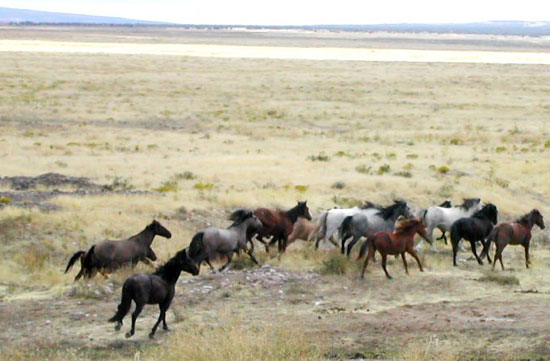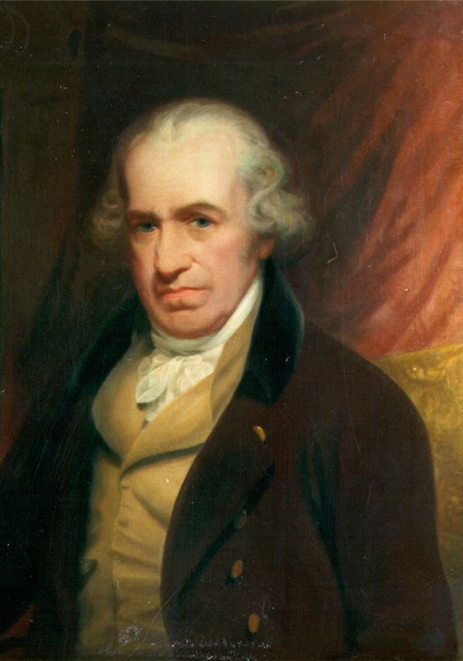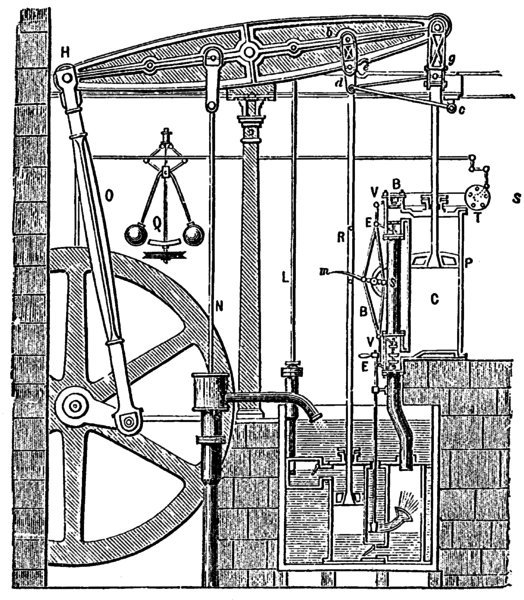Horsepower
by Roger Kaza
Today, the power of horses. The University of Houston presents this program about the machines that make our civilization run, and the people whose ingenuity created them.
Horsepower cracks me up. I mean, the very concept of it. We've been chugging along on two, four, six, eight cylinders for well over a century, yet we still size up our cars by a hypothetical team of horses pulling them. Horsepower seems like it ought to join candlepower in the department of quaint obsolete measurements. Yet every sticker of every shiny new car boasts of equine strength. Not that you ever wondered but, one horsepower is the force needed to lift 550 pounds one foot in one second. Or, it's equivalent to about 746 watts — almost enough to turn on your coffee maker in the morning. It would take many more horses than that to keep even the greenest of households running for very long.

But originally horsepower had nothing to do with automobiles, since they hadn't been invented yet. It did however have a great deal to do with watts, as in James Watt. His radically improved steam engine was far more efficient than the older engines designed by Thomas Newcomen. In the 1770s Watt went into business and offered to replace those engines. His profit would come from a royalty levied on the huge savings in coal needed to run them. That was all well and good, except that some of Watt's potential customers didn't have coal-powered engines to begin with. They had horses. So he had to do some reverse engineering and determine how many horses equaled a steam engine. It's a fairly arcane formula, based on a horse pulling a twelve-foot mill wheel for four hours, and it's possible that Watt was slave-driving the horse in that equation. But like most measurement units, the actual figure is pretty arbitrary…though we'd be sorely lacking without it.

James Watt (1736-1819)
Horsepower eventually became the standard to rate all types of motors. Early cars had maybe ten horsepower or less. The first "modern" automobile, a turn-of-the-century Mercedes, had a staggering 35 horsepower. After World War II, ravaged Europe and Japan returned to tiny ten-horsepower microcars to save on fuel and materials. They got you from point A to B, though certainly not at freeway speeds. Nowadays, even ten times that amount is considered barely adequate for a small car.
And perhaps you're wondering about your own personal horsepower? For any prolonged work it's about a one-tenth of a horse. Maybe up to a quarter horsepower if you're an endurance athlete. And for short bursts? Well, in a pinch you might just be as strong as the horse in Watt's formula, though I wouldn't put it to the test.

Boulton & Watt Steam Engine, 1784
It's said that when the Aztecs first saw conquistadors on horseback, they thought that were looking at one gigantic two-headed beast. Maybe, in a way, they were. After thousands of years of domestication, Europeans and Asians really were one with their horses, in farming, war, transportation, and industry. So when James Watt fired up the Industrial Revolution with his steam engine, it seems fitting that he gave homage to the noble animal that had done so much of the work getting us there.
I'm Roger Kaza, from the University of Houston, where we're interested in the way inventive minds work.
Muscle cars and maximum horsepower have been with us for a long time. The opposite game of "how low can you go?" is also fun to play. As mentioned, microcars after World War II were built with tiny two cylinder engines of ten HP or less. Some, such as Charles Mochet's velocars, had no motor at all, but were human powered. The author's commuting vehicle, described here, uses both: an electric-assist recumbent bicycle with about 1.5 maximum horsepower, including the pedal power. Its electrical operating costs are around .2 cents per mile, or the equivalent of approx. 1500 miles per gallon (@$3.00/gallon.) Plus it wakes you up in the morning, a not inconsiderable perk!
"In a pinch you might be just as strong as the horse in Watt's formula." On the face of it this seems absurd, but the comparison is between a human's short burst of steam with the horse's sustainable effort. Clearly the horse's short burst would blow away the human's.
Interesting article on horsepower.
Photo of horses and steam engine courtesy Wikipedia. Watt portrait courtesy Inverclyde Council, UK.
This episode first aired on March 19, 2013.